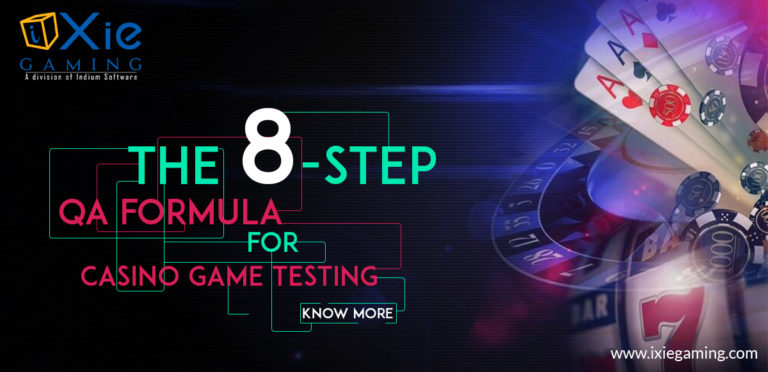Establishing a sustainable and balanced game economy is crucial to the success of any game, as it helps drive player satisfaction and engagement. However, the gaming world has been evolving constantly. This has made it difficult to find the right balance between numerical indicators, such as player engagement and rewards, and in-game spending incentives. As a result, there has been a growing need to embrace new approaches to creating sustainable game economies. And that’s where game analytics comes in.
By leveraging game analytics, game developers and managers can effectively address key issues facing a game’s economy. For instance, they can track players’ wallets and detect warning signs that may indicate an unbalanced economy. In this article, we delve into how developers can leverage game analytics to achieve a balanced, stable, and sustainable game economy.
Where Do You Start?
Creating a sustainable game economy using game analytics can be challenging. You may ask yourself many questions like:
- What resources do you need to track?
- How do you categorize the key resources?
But worry not! To create a well-balanced and sustainable game economy, begin by defining the core loop. Also, categorize the key resources and visualize the outflows and inflows of each resource. During this process, identify all the spending options (sinks) and earning opportunities (sources).
Use event tracking systems to effectively track the said resource dynamics. Most importantly, ensure the tracking events include the parameters to assess the amount of resources utilized or spent.
Implementing such a robust tracking system can help developers gain insights into resource utilization and player behavior. This analytics-driven approach empowers developers to identify possible game imbalances. Also, it enables them to take the necessary actions to optimize the resource flows.

3 Strategies to Consider for Creating a Sustainable Game Economy
Here are three key strategies to consider for establishing a sustainable game economy, leveraging game analytics for stability and balance:
1. Optimize Initial Game Design
Creating a sustainable and balanced game economy starts with optimizing the initial game design. Therefore, it’s crucial to carefully map out players’ progression. Tools such as spreadsheets can help game designers monitor the cumulative flow of resources, like items and currency, through expenditures and rewards as players progress through different maps and levels.
With that said, designers can analyze the resource flow to detect bottlenecks where sources exceed sinks and sinks outweigh sources. In an ideal scenario, there should be no deficit between sources and sinks, as it indicates a balanced demand and supply.
However, strategic implementation of challenges can create bottlenecks and offer players a sense of accomplishment upon overcoming the obstacles. On the contrary, well-positioned surpluses (where sources exceed sinks) can provide moments of abundance and respite, improving player satisfaction. Therefore, designers should carefully model the deficit and consider the intended player experience. This way, they can achieve a balanced and sustainable game economy that keeps players motivated and engaged throughout their gaming journey.
2. Monitor the Live Game
To achieve a sustainable game economy, embrace game analytics beyond the production ecosystem to the live environment. Once the game is live, leverage the initially stated tracking events to analyze your player’s behavior. Also, track the key performance indicators daily. This way, you can detect any warning signs and take the necessary actions.
Here are some key aspects worth monitoring:
- Players’ spending habits. Evaluate the players’ spending patterns and metrics, such as conversion rates and average revenue per paying user. This data offers insights into the effectiveness of your monetization strategies and the overall economic performance.
- Player virtual wallets. Monitor the average amount of every currency held by players. For instance, you can analyze the average number of items or gems in players’ inventories. This way, you can identify the most engaging and active currencies in the players’ wallets.
- Player feedback. Gather and analyze player reviews, feedback, and community discussions. These sources of feedback offer valuable insights into possible imbalances in your game’s economy.
3. Identify Warning Signs
Several issues may indicate an unsustainable, unstable, or imbalanced game economy. These signs include:
- Low conversion rates. Low conversion rates may indicate that your game lacks incentives for player engagement and purchases with monetization systems. In fact, it suggests that your game’s economy may be providing inadequate challenges or bottlenecks to drive purchases.
- Disproportionate resource accumulation. Some features in your game may introduce unintended imbalance within the economy. When these features take effect, they create excessive resource accumulation. This reduces the motivation for in-game purchases.
- Limited player engagement. If players show minimal engagement, it may indicate that your game’s economy is imbalanced and unsustainable. Game analytics can help you identify areas of low engagement and mitigate them to enhance your game’s sustainability and balance.

Enhancing Your Game’s Economic Sustainability with Data-Driven Actions
Game developers can take various data-driven actions to address imbalances and stability issues in their game economy. These actions include:
- Fine-tuning monetization mechanics. Developers can leverage game analytics tools to analyze players’ spending patterns and lifetime value. This data can inform their decisions on in-game purchase options, pricing, and fine-tuning of the perceived value of virtual items.
- Iterative Designing and Testing. Developers can continuously monitor and analyze player data to make iterative modifications based on the player feedback and behavior. Also, they can regularly test new features and adjust economy parameters to ensure a balance in the game economy.
- Adjusting resource sinks and sources. Developers should analyze data on resource flows and player progression to identify areas where sources and sinks are not balanced. This way, they can create a more balanced and stable game economy.
Final Thoughts
Creating sustainable game economies is vital to the success of modern games. It ensures players enjoy a seamless and balanced gaming experience. Although achieving such a game economy can be challenging, game analytics services can help. It enables developers to analyze player data and take data-driven actions to enhance the game’s economy, stability, and balance. Several measures, like optimizing game design, monitoring the game in a live environment, and identifying possible warning signs of game imbalance, can help create a sustainable game economy. Through game analytics, you can fine-tune the monetization mechanics, adjust sources and sinks, and iteratively design and test your game based on player feedback. The outcome? A sustainable game economy and enjoyable gaming experience.
Ready to create a sustainable game economy with game analytics? iXie has got you covered.
Partner with us today to enhance your game’s balance, sustainability, engagement, and retention! Contact us to get started!
FAQ’s:
Here are three key strategies to consider for establishing a sustainable game economy, leveraging game analytics for stability and balance:
- Optimize Initial Game Design
- Monitor the Live Game
- Identify Warning Signs
Some key aspects worth monitoring in a live game economy are as follows:
- Players’ spending habits
- Player virtual wallets
- Player feedback
Several issues may indicate an unsustainable, unstable, or imbalanced game economy. These signs include:
- Low conversion rates
- Disproportionate resource accumulation
- Limited player engagement
Game developers can take various data-driven actions to address imbalances and stability issues in their game economy. These actions include:
- Fine-tuning monetization mechanics
- Iterative Designing and Testing
- Adjusting resource sinks and sources






